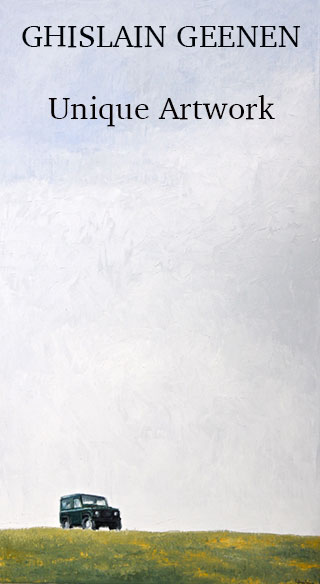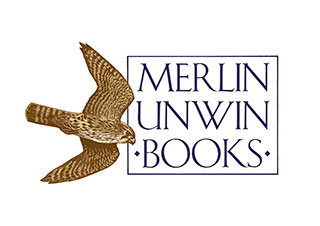A tweed clad shooter clutching a beautiful British hammer gun once lectured me that “clothes make the man.” I suspect that this is not a philosophy Cyril Adams subscribes to.
This past summer Adams met me at the door of his townhouse in West Houston wearing a pair of old jeans, scuffed deck shoes and an untucked denim shirt bearing the name Atkin Grant & Lang. The former owner of that London gunmaker—and the man who has done more than anyone in modern times to popularize British double guns in America—beckoned me inside, asked me to sit, and then sprawled into a large red armchair, draping one leg over the side.
Over the fireplace hung a yard-long photo of King George V shooting tigers in Nepal from the back of an elephant; on the wall nearby a built-in bookshelf brimmed with shooting trophies and books on history, art, architecture and, of course, guns. But a modestly sized townhouse was not necessarily where I had expected to meet—as British auctioneer Gavin Gardiner describes him—“the legend that is Cyril Adams.”
I have very few material needs,” Adams replied. “I’d make a good monk.”
“Cyril,” I said, “I was expecting to find you somewhere on a ranch.”
“I have very few material needs,” Adams replied. “I’d make a good monk.”
Then he told me he thought I’d find my visit a waste of time, that he wasn’t any different than any other shooter, that his life wasn’t particularly noteworthy, and that what he knew about guns he could tell me in an hour or so. “Then what’re you going to do?” he said. “You can leave now if you’d like.”
It had taken me more than a decade of pleading to land an interview with Adams, a man who—despite the awe in which he is held in international fine-gun and pigeon-shooting circles—is a self-effacing and deeply private individual.
“Sorry, Cyril, we’re just getting warmed up . . . .”
Cyril Adams was born in 1938 in Austin but grew up in Houston, the son of a prominent engineer who instilled in him the virtues of constant work and delayed gratification. “My father was a Depression-era man,” Adams said, “and he drilled it into my head from the time I was able to talk that you’ve got to work hard and live a good clean life, and when you’re 65 maybe you can retire and enjoy life.
“I’d become a workaholic, just like my father, and when he was 53 he had a cerebral hemorrhage and died while I was talking to him one day—just about like I’m talking to you. That’s about the time I decided that maybe this white Protestant work ethic might not be the right way.”
Trained as a civil engineer with a specialty in low-temperature physics, Adams had been in business for himself since his mid-20s, at first consulting in the design of air-liquefaction and fractional-distillation plants and later designing and building those plants for clients around the world in the oil & gas, aerospace and defense industries.
Adams had few competitors in a field that was esoteric and exceedingly complex, and his business not only thrived but also was lucrative. “Cyril was as successful in his field as anyone, anywhere,” said longtime friend and shooting companion Joseph F. Toot, the former CEO of the Timkin Company, a Fortune 500 manufacturer of bearings and alloy steels. “Cyril designed and built a gas plant for Timken in 1985. With only routine maintenance, it has never failed in 26 years. He’s a brilliant engineer.”
Adams had been a champion pistol shot as a student at Texas A&M, and he grew up occasionally hunting doves with his father. An early trip to Mexico for whitewings stoked a passion for wingshooting, and by the mid-1960s Adams was competing in the live-pigeon trap ring. In the early ’60s he met Houston engineer and fellow shooter Robert Braden, and a life-long friendship formed. So smitten were the pair with dove shooting that they established a private lodge in Mexico—Rancho Amigos in Tamaulipas—where in ensuing decades, as Braden describes it in his hunting memoir As I Look Back: Musings of a Birdhunter, the two entertained “three governors, no less than 30 major CEOs of corporate America, three English lords, brilliant doctors . . . numerous mayors and county officials, and, more importantly, lots of nice regular folks who loved to shoot . . . .”
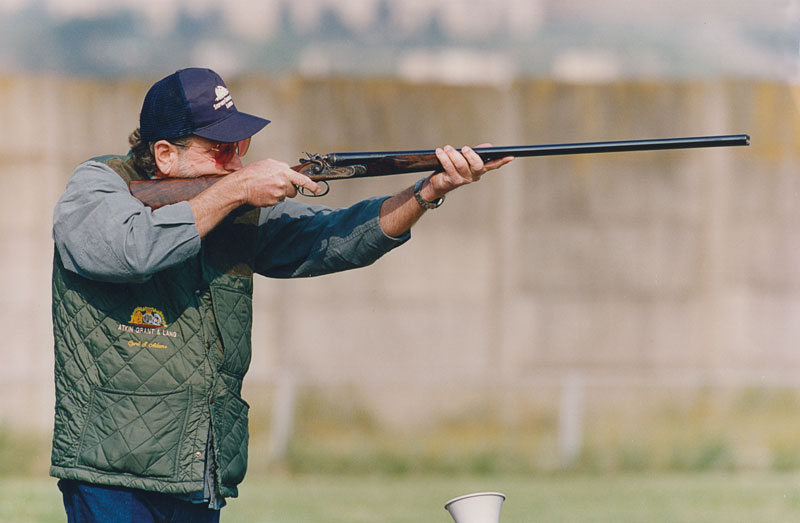
The death of his father, however, profoundly affected Adams. “After that I sort of lost interest in living just to make money,” he said. International travel for business had exposed Adams to hunting opportunities overseas, and a passion for Victorian history led to his introduction in the ’70s to Britain’s sporting traditions.
His first encounter with a shooting school near London was a revelation. “For me, it was just like being born again,” Adams said. “Hell, I couldn’t believe it. There weren’t shooting schools in America at the time, and to find that there were places that taught the science of shooting a shotgun and that you could work at it and improve—this was an alien concept to me. I ended up going to all of them all over England.”
This also marked the onset of what Braden describes as the “mystical spell” that has since held Adams in its thrall: that of the side-by-side British shotgun. “As I learned more,” Adams said, “I began to realize that that these guns were something special. It wasn’t just the person pulling the trigger; the guns had a hand in you shooting well.”
And shooting well in the pigeon ring was, for Adams, absolutely imperative. In a discipline where missing one bird can mean the difference between winning or losing tens of thousands of dollars, possessing the right gun becomes as important as Excalibur was to Arthur.
Cartridges and chokes, reliability and handling—competitive live-pigeon shooters subject characteristics of their guns to a crucible of scrutiny unknown to casual hunters or game shooters.
in British guns, Adams encountered —particularly in vintage pigeon hammerguns—articles that would alter the direction of his life
In British guns, Adams encountered —particularly in vintage pigeon hammerguns—articles that would alter the direction of his life and career. Their craftsmanship and designs appealed to his engineer’s eye, but it was their shooting qualities—their liveliness and handling—that led to his success with them in the pigeon ring and field. And as is the case with many serious shooters, there was always another gun to find, one that could better his scores.
“I got into the gun business because I was a live-pigeon trap shooter,” Adams said, “and when I’d buy a gun I thought I could shoot better than the one I was using, I had to sell the one I was shooting to buy the other. Over time I developed a group of fellow shooters that followed me around waiting for me to cast off another gun. And it just grew from there.”
Adams didn’t quit his engineering business immediately—he describes the process as a decade-long transition—but increasingly he began to channel his talents into buying, restoring and selling vintage British guns, particularly those then out of fashion.
In the 1970s and early ’80s, light, short-barreled game guns were all the vogue in the UK; long-barreled versions and pigeon guns were regarded as old-fashioned, and hammerguns—particularly those with Damascus barrels—were considered obsolescent, even obsolete.
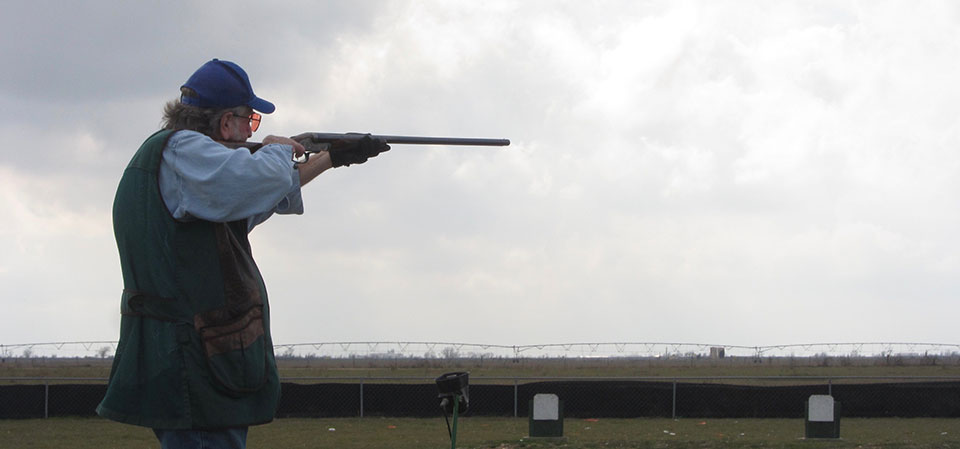
“You could buy all the best hammerguns you wanted for 500 pounds,” Adams recalled. “They were nothing—nobody wanted them. And of course if they had Damascus barrels, then you had the impression they paid you to take them away.”
To ensure quality restoration, Adams teamed up with Ron Solari, who had been employed with Paul Roberts, who then owned Rigby’s in London. “Ron was a genius,” Adams said. “He had eyes like micrometers, and he had the ability to look at guns and know everything about them—not only what was right about them but what was wrong, and why they had gone wrong and what needed to be done to fix them.”
Early on, Adams foresaw a looming shortage of British smallbores—the ratio of 12-gauges made relative to 20s has been estimated to run more than 100 to 1. “When I saw the market was going to run out of sub-caliber guns, I knew we were going to have to make them,” Adams explained. “But as vain as I am, I’m too smart to put my own name on a gun.”
Instead he went looking for a gunmaker to buy, but only one of London’s best. “We approached Boss first, because I thought they made a beautiful gun,” Adams said. “At the time, they were in neutral; they weren’t making a lot of guns.”
When Boss’s then-owners balked, Adams’ representatives (led by his friend Lord Massereene, a director of the board at Rigby’s and a well-known British shooter) approached Purdey’s. “They were about broke, but they didn’t want to sell either,” he said. “So you get rid of Purdey’s and Boss and the only other name worth having was Stephen Grant, which I was particularly fond of—I had owned a lot of them. They had made some guns that would just bring tears to your eyes.”
Grant—long amalgamated under the Churchill, Atkin, Grant & Lang banner—had closed its doors in 1980, with the names dormant under ownership by the British conglomerate Harris & Sheldon Group. “I didn’t want anything to do with Churchill, because they had already made a bunch of cheap guns and had ruined their own name. H&S wouldn’t split them up and just sell Grant, but we finally talked them into selling us Atkin Grant & Lang in 1984. And the only reason I bought them was so I could make smallbore guns.”
With Lord Massereene as chairman and with Solari demanding the very best work from bench-trained craftsmen, AG&L began turning out new guns, many of them built as Stephen Grant smallbores that reflected Adams’ precepts—long, well-balanced barrels, fluted fences, sidelevers, and gorgeous, traditional engraving by the likes of Alan Brown and Keith Thomas.
Altogether about 40 new guns were made under the ownership of Adams, with many hundreds restored. “The saying at the time was that these were the best new guns coming out of London,” Joe Toot said. “Adams used the best outworkers, and Ron Solari got the best out of them.”
Purdey-trained gunmaker David Sinnerton, regarded as one of Britain’s finest independent finishers, recalled the pair’s insistence on only the best work. “Ron knew what he wanted and how a gun should work, look and handle,” he said.
“We made some beautiful guns of very high quality, and it’s all because of Ron Solari,” Adams said. “God, I loved him—he was so good.”
Adams’ unwavering commitment to quality led him to sell the firm (to Ken Duglan) in the late ’90s after Solari emigrated to Australia. “We had about 60 guns being restored and maybe 10 new ones on the go,” Adams said. “I was in Texas, and without Ron in London I couldn’t run it from over here and maintain the quality I wanted.”
The rebirth of AG&L in the ’80s under Adams’ ownership in many respects marked a turnaround in the fortunes of the modern London gun trade. The global economy was by then recovering from the malaise of the 1970s, and interest in double guns was rising. Nowadays there are any number of independent gunmakers trading in Britain with varying degrees of quality and success—and it was Adams’ success with AG&L that helped pave the way.
In 1996 Adams and Braden published Lock, Stock & Barrel: Making an English Shotgun and Shooting with Consistency (Safari Press), with Adams penning the chapters on craft gunmaking and Braden handling shooting technique. Clearly written, with excellent photos, and a product of the pair’s expertise, the book remains to my mind the best single-volume primer on the subject—made all the more remarkable by the fact that its authors were American.
Lock, Stock & Barrel was also deeply influential—one of those rare books that changed the fine-gun market. “Within weeks of its publication, my telephone was abuzz with enquiries from American clients looking for fine hammerguns of the types that Cyril had been buying for years and that he had now extolled the virtues of in his book,” said Gavin Gardiner, then in charge of Sotheby’s sporting-guns department in London. “Suddenly, a top-lever Purdey was no longer £1,500, but now £5,000 if you could find one, and prices have just continued to rise.
“I credit Cyril entirely for kicking off the whole vintage gun movement. Before that book there was no real interest in pre-1900 English guns. Now the market is alive with interest.”
I credit Cyril entirely for kicking off the whole vintage gun movement.
Adams almost scoffed when he heard accolades about his standing in the British gun trade. “They just like me because I bought a bunch of guns from them,” he said. When asked about his influence, he was quick to credit others for many of the changes that have occurred in today’s double-gun market. Those “others,” I reminded him, had come later, following in his wake.
Selling British guns is a business that Adams remains in today, though he debates the use of the word “business” to describe his operation. “I’m not sure I’d call it a business,” he said. “I don’t even like to sell guns. I like to restore guns—my enjoyment in life with guns is restoring them, saving them from hanging on walls. The only reason I sell them is to get the money to buy some more and do it again.”
The contemporary popularity of pigeon guns, hammerguns, Damascus barrels—in fact, vintage British side-by-sides in general—owes much to Adams’ influence. Noted Gardiner: “A lot of the trends we see in the market today were a result of Cyril’s tastes and buying habits and his own personal passions for pigeons and shooting.”
Although some regard the fine side-by-side market as merely a niche in the overall shotgun shooting scene, Adams also built the first Helice ring in the US and, along with fellow Texan Bob Brister, helped design the first sporting clays course in America. (Helice, aka ZZ or Electrocibles, is a politically correct simulacrum for live pigeons, the target being plastic.)
"Casting pearls before swine has never been one of my strong points,” Adams admitted.
To a man, his friends speak of Adams as being genuinely generous in sharing knowledge about guns and shooting, but they also note that he is a man who does not suffer fools—gladly or otherwise. “Casting pearls before swine has never been one of my strong points,” Adams admitted. “I’ll take all afternoon to talk to a young person or anyone who wants to learn, but I’m not going to talk five minutes to somebody who’s going to waste my time saying something like, ‘I’ve shot a million rounds through my Model 21 and it’s never broken.’ That’s bullshit, man. It’s a piece of machinery; it’s going to break. All guns do.”
At 73, Adams is still consumed by shooting. In 1998 he took second place in the World Helice Championship, in Porto, Portugal, and he still hopes to one day win it. “Helice is the ultimate test of a shotgun, a shell and a shooter,” he said. “It’s more difficult than live-pigeon shooting; statistically the scores prove it. And there is no room for error. None.”
Adams still shoots at least twice a week and still goes trotting the globe to Helice and pigeon shoots—but only to the best of them. “I like to go to the big shoots where they draw the big names and you can compete against and watch some really good shooters,” he said. He ventures to Argentina a few times a year and uses a couple of century-old single-barrel English hammerguns to tackle only the highest-flying pigeons and doves. “Shooting a single-barrel is a little more fair to the birds,” Adams said. “You do it right the first time, or they win, which seems sporting to me.”
Apparently, one shot is normally all that’s needed when Adams unsheathes a favorite 12-gauge 33-inch single-barrel pigeon hammergun. “It’s like a windshield wiper,” Toot said. “When he swings it across the sky, something falls.”
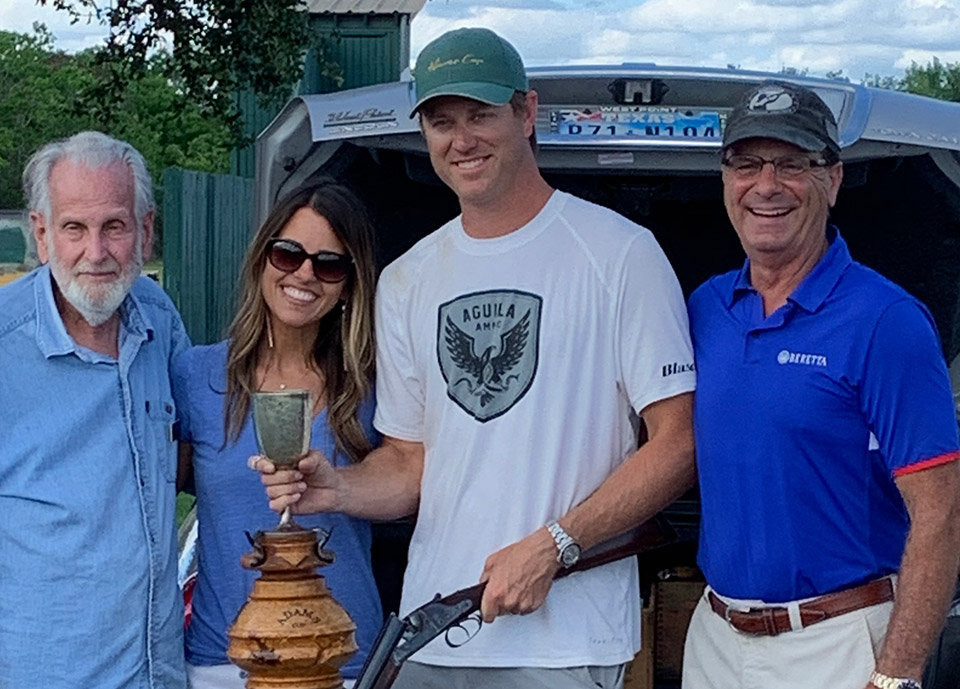
But accomplishments on the sporting field pale in the face of the fortitude Adams has exhibited in a two-decade-long fight for his health. In 1989 Adams was diagnosed with large-cell lymphoma, an often-fatal cancer, and he has subsequently been stricken by melanoma and three heart attacks. Complications from chemotherapy to battle cancer attacked his spinal cord, paralyzing him from the waist down for half a year. “The doctors all told me I’d never walk again,” he said.
They had not counted on Adams’ passion for shooting—or the sport’s restorative powers. “I taught myself to walk again by shooting,” Adams explained. Assisted by a daughter (he has two) and with the aid of a walker, he would brace himself standing at a shooting station, call for a bird, shoot it, and before he could fall use the gun to catch himself in the walker. Then he’d proceed, slowly, to another station and repeat the process, gradually building up his endurance until he could use a cane. Still, permanent damage to his spinal cord has left him in chronic pain severe enough to mask the feeling in his feet, and he must look at them as he walks in order to maintain his balance.
Cyril not only defines the sportsman in the best sense of the word, but he has taught all who know him the meaning of personal courage
“But balance is such an important part of shooting,” I said. “How do you still do it?”
“Well, I don’t shoot as well as I used to,” Adams replied. “The good news is that it taught me the proper way to kill incoming birds, which is well in front. I’ve practiced a lot at shooting birds out front, because if I let them come in too long I’m in trouble from falling over if I lean back.”
He still falls, he said, “everywhere from Charing Cross Station, in London, to Patagonia.” But it hasn’t stopped him. Once, a tumble down a flight of stairs at a hunting lodge in West Texas shattered his right leg below the knee into a dozen pieces. Issues with his heart prevented doctors from administering anesthesia for an operation. The only option was splinting it. “The doctor told me I could either have it set straight and I wouldn’t be able to bend it very much,” Adams said, “or I could have it bent and I wouldn’t be able to straighten it up. He said, ‘The question is: How do you want to look when you walk? Do you want to gimp along, or do you want to throw your leg out when you walk?’
“I told him, ‘I want it bent.’ “The doctor said, ‘That didn’t take you very long.’ “I said, ‘That’s because I’m a student of the Percy Stanbury style of shooting, and I’ve got to have my right leg slightly bent when I shoot; so if you’re going to tell me it’s going to be straight and I can’t bend it, I can’t shoot that way . . . .’”
“You’re pretty tough, Cyril,” I said, shaking my head.
“Naw, man,” Adams replied. “I’ve been lucky. All that stuff’s luck—and I’ve had all the benefits of modern medicine that my father didn’t get.” Lucky, maybe, but Adams is also possessed of a sort of bravery all of us should aspire to. As someone who has also suffered spinal cord injury and who has had cause to doubt his future and fate, I found Adams’ perseverance profoundly moving and also heartening.
His late, great friend Robert Braden, who died in 2001, perhaps captured Adams’ essential qualities best in As I Look Back: “Cyril not only defines the sportsman in the best sense of the word, but he has taught all who know him the meaning of personal courage. He met the demon cancer and defeated it with the same steadfast determination that has characterized his entire life. For me and for many of his friends, he has been an inspiration and a rare gift.”
Our interview that Adams thought might take an hour stretched into two days, and as I departed Houston I was reminded that it is not clothes that make the man, nor a fancy gun—but rather character. See Exhibit A: the man in the dungarees and the denim shirt.
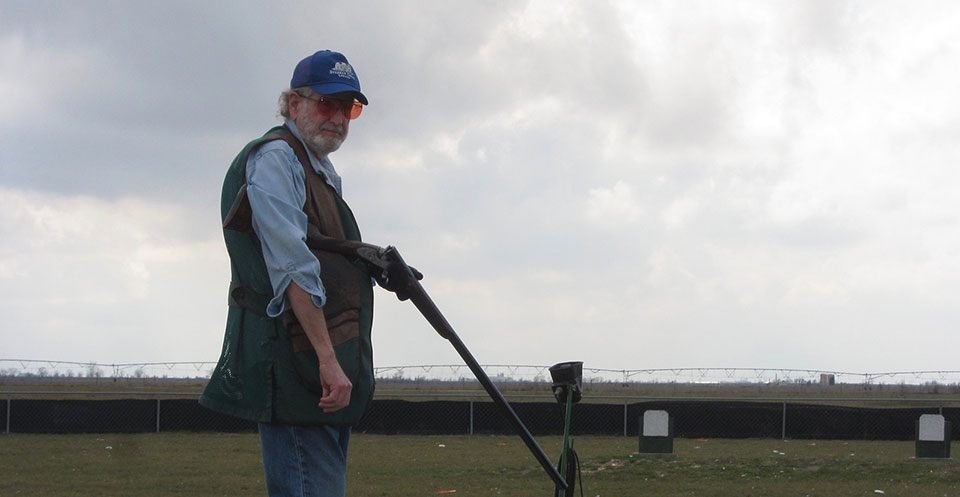
Cyril Adams died, in Houston, a few days ago.
Vic Venters is Senior Editor of Shooting Sportsman. This article first appeared in Shooting Sportsman in 2011.
Published by Vintage Guns Ltd on

